Go Slow to Go Fast : Building Strong Foundations for Leadership (Part 1)
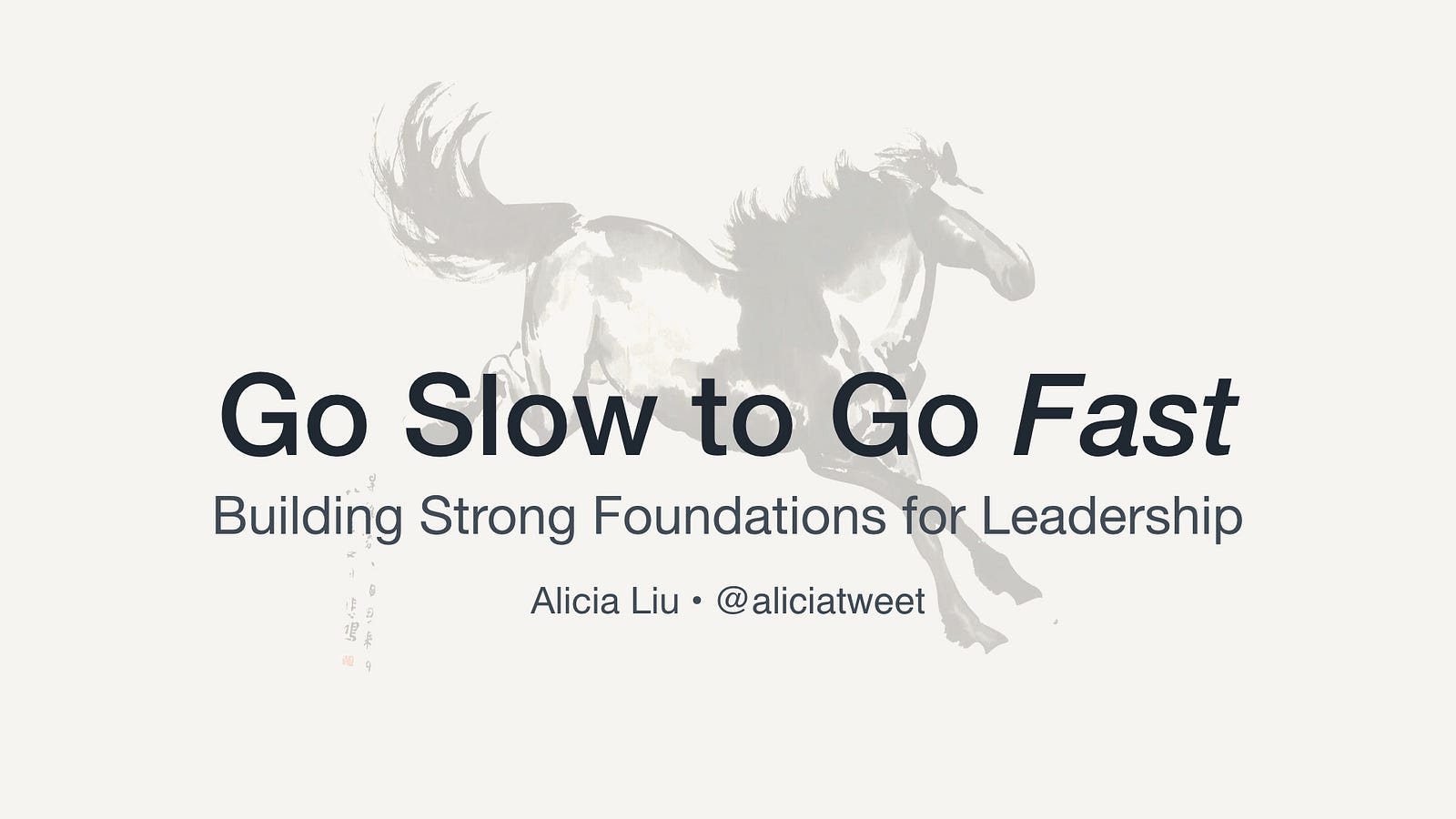
Building Strong Foundations for Leadership
I had the honor of speaking at The Lead Dev conference in London last week. Lead Dev is one of the best organized conferences I’ve attended. I love that the conference focuses on how we improve engineering as people, not just learning new technology. I highly recommend it to engineering leaders, whether you’re a manager or IC.
My talk is about how to build healthy foundations and developing the core characteristics for great leadership. You can watch the whole talk below, or continue reading. This is Part 1 of 3 of an edited version of the talk, not a direct transcript. I’ve revised some parts to read better, linked to resources that I mention in the talk, and omitted most visual slides.
Strong Foundations Start with You
To be an effective leader, you yourself need to be a healthy productive person. Everyone knows what the basics are: we need to eat well, be physically fit, get quality sleep, and nurture deep nourishing personal relationships.
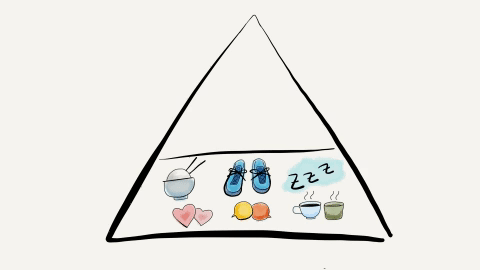
Yet, just getting these basics down is something most people struggle with. When you don’t have a strong foundation, you can’t be an effective leader, at least not sustainably. You can pull it off for a while, even for years, but eventually you’ll burn out.
My previous job was at Coach.me, we started with an app to help people build better habits, and then shifted into coaching — because we realized that even when you know what to do, it’s still hard to know how to to do it. The top areas that people wanted to improve have been consistently about achieving physical and mental health, to become more productive. Yet despite spending years learning all the different ways to do personal development, I have still really struggled with it.
After 4 years at Coach.me, I was ready to take on a new challenge, I went from helping people improve themselves, to helping the government improve services for people. At the beginning of last year, I joined Nava, just 20 people at the time. We work with government agencies in the US to build digital services for millions of American residents.
Going Fast — Too Fast
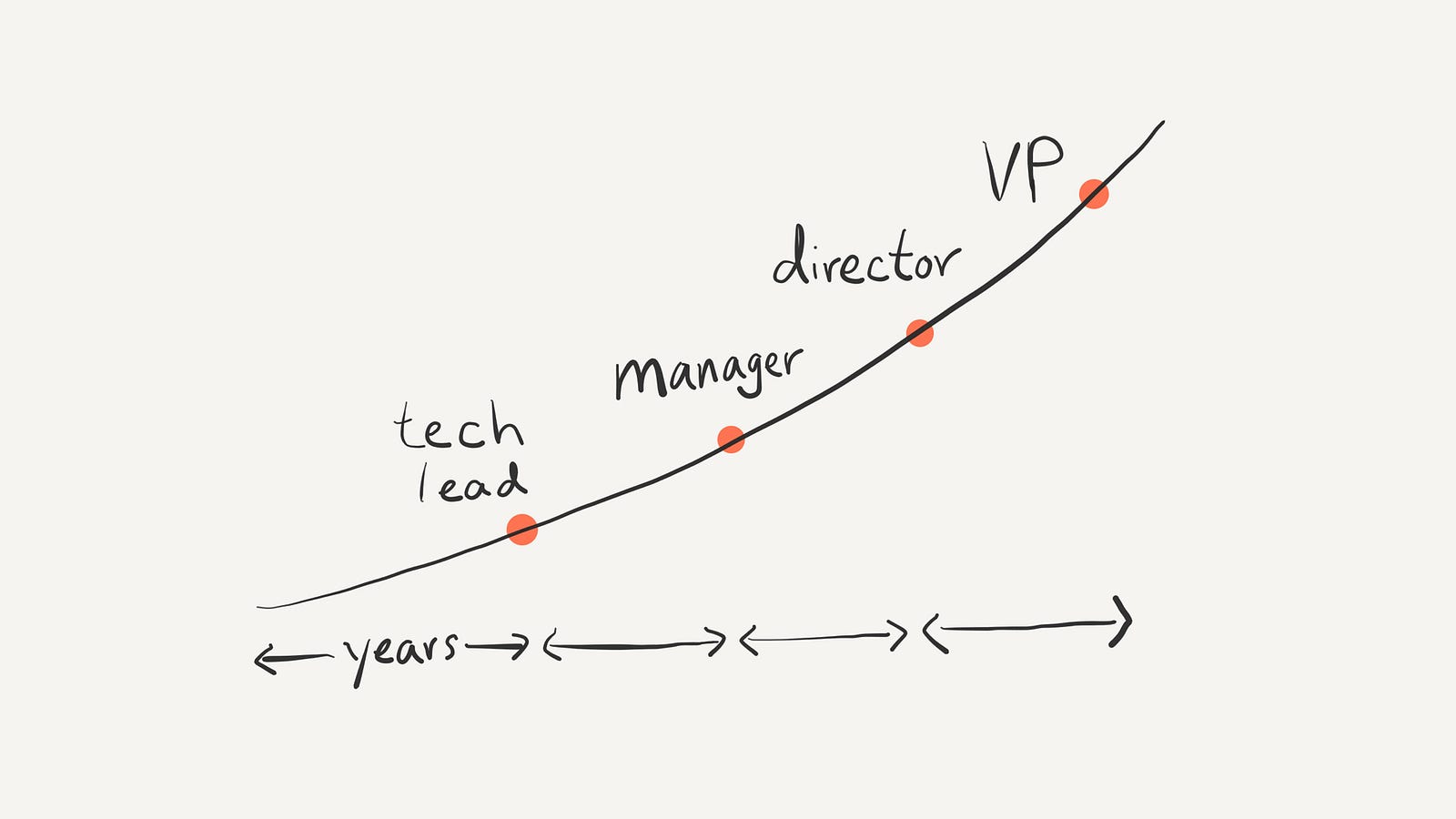
In a typical established company, the path for engineers would look like this, with plenty of years to grow into your next role and see if management is for you, hopefully with support and guidance.
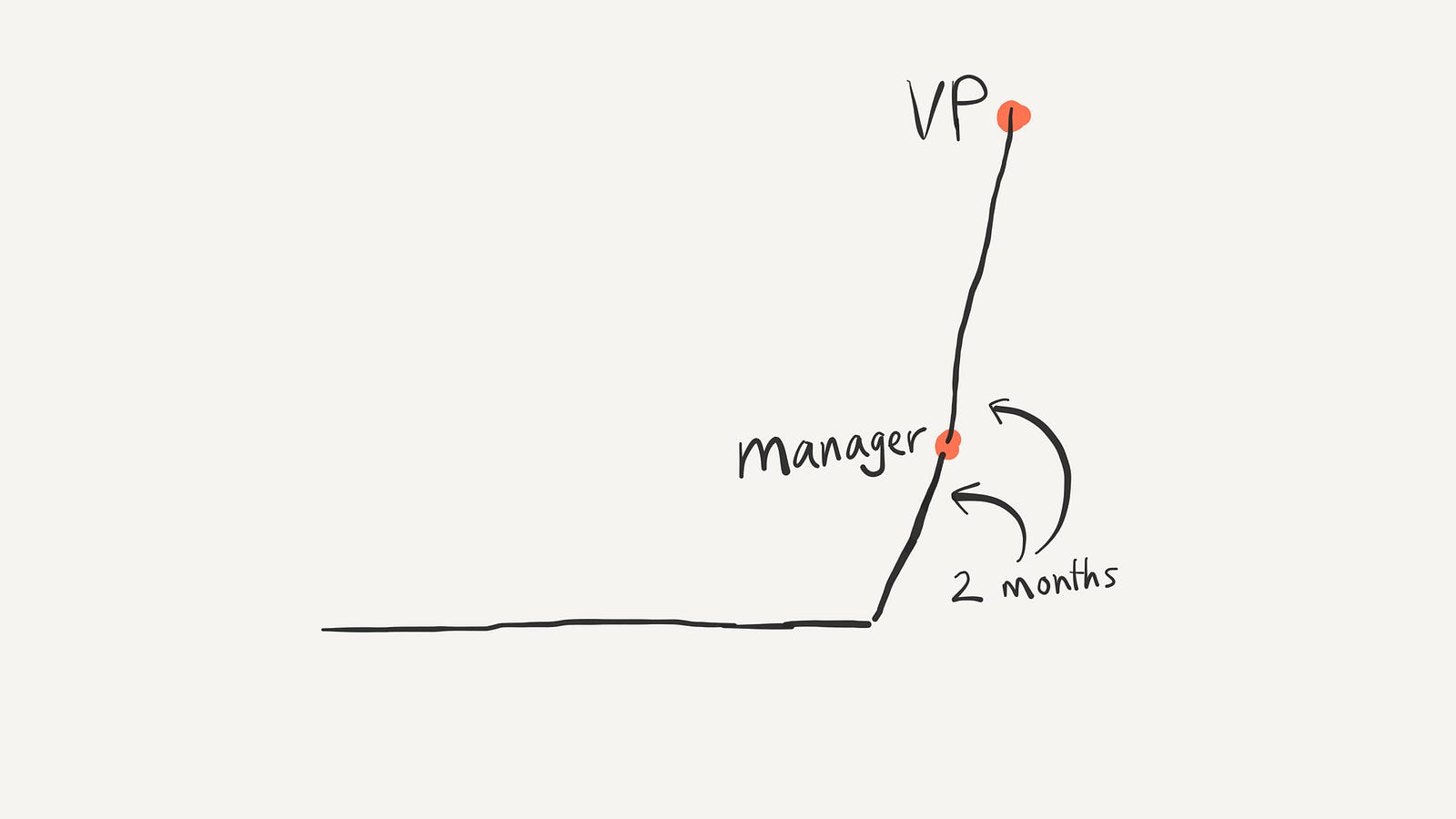
However, at Nava, I happened to join at the start of a growth phase, so my path was more like a hockey stick. I was promoted to an engineering manager a couple months after joining the company, and then only 2 months after that, was promoted to head of engineering. Our team size tripled in the span of a year, and I went from not managing anyone to managing nearly 40 people in a few months. The stress of taking on a lot of new responsibilities and trying to figure out how to do a brand new job that I wasn’t qualified for — no one is qualified until you’ve done it at least once — took a toll on my health.
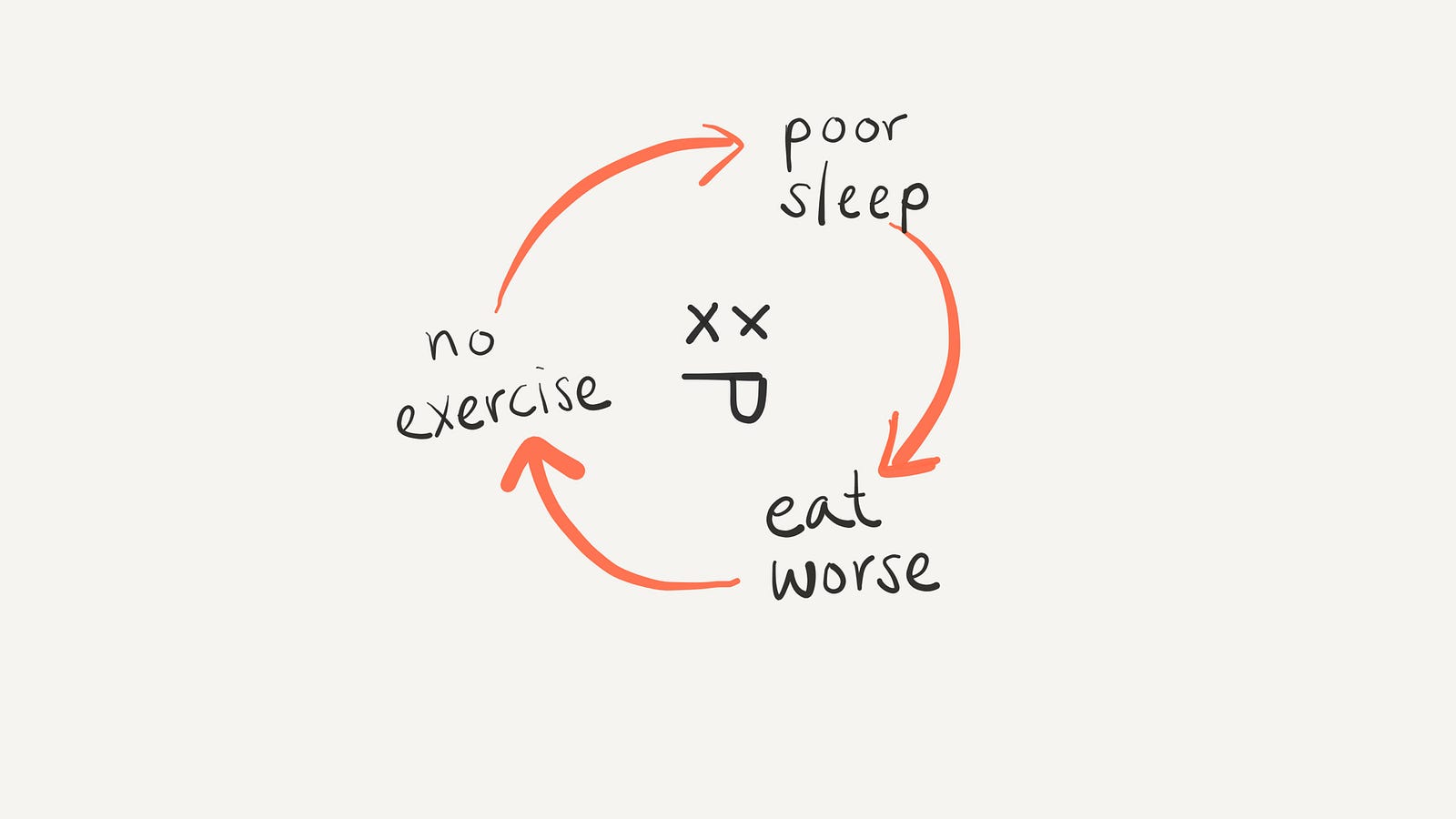
I developed insomnia, which triggered depression. If you’d like to learn more about how I overcame the interlinked challenges of stress, anxiety, insomnia and depression, and how I finally learned to sleep, check out my comprehensive article “How Depression Made Me a Morning Person.”
Here I want to focus on how getting back to regular exercise, specifically triathlon training, has really helped me.
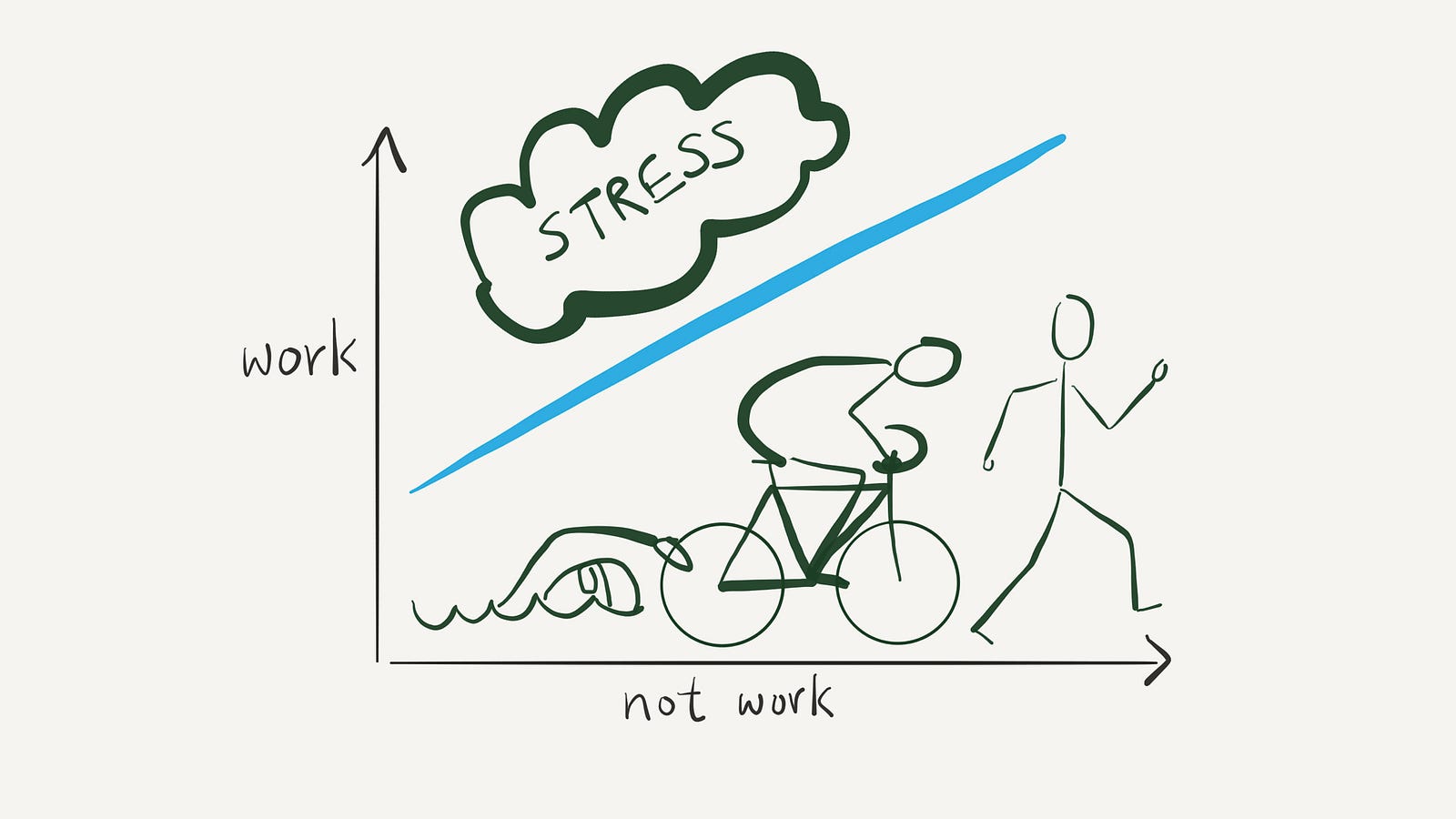
It may seem counter-intuitive to go from no exercise to training for three sports at the same time, while my work responsibilities were increasing at the same rate. However, this is one of the best things I could have done, and it really saved me.
Daily exercise kicked me into a virtuous cycle, it improved my sleep, which improved my mental health. Exercise is shown to be just as effective as sleeping pills for insomnia, and just as effective as anti-depressants for depression, and unlike medication, all the side effects of exercise are good ones — you eat better, feel better, and even look better.
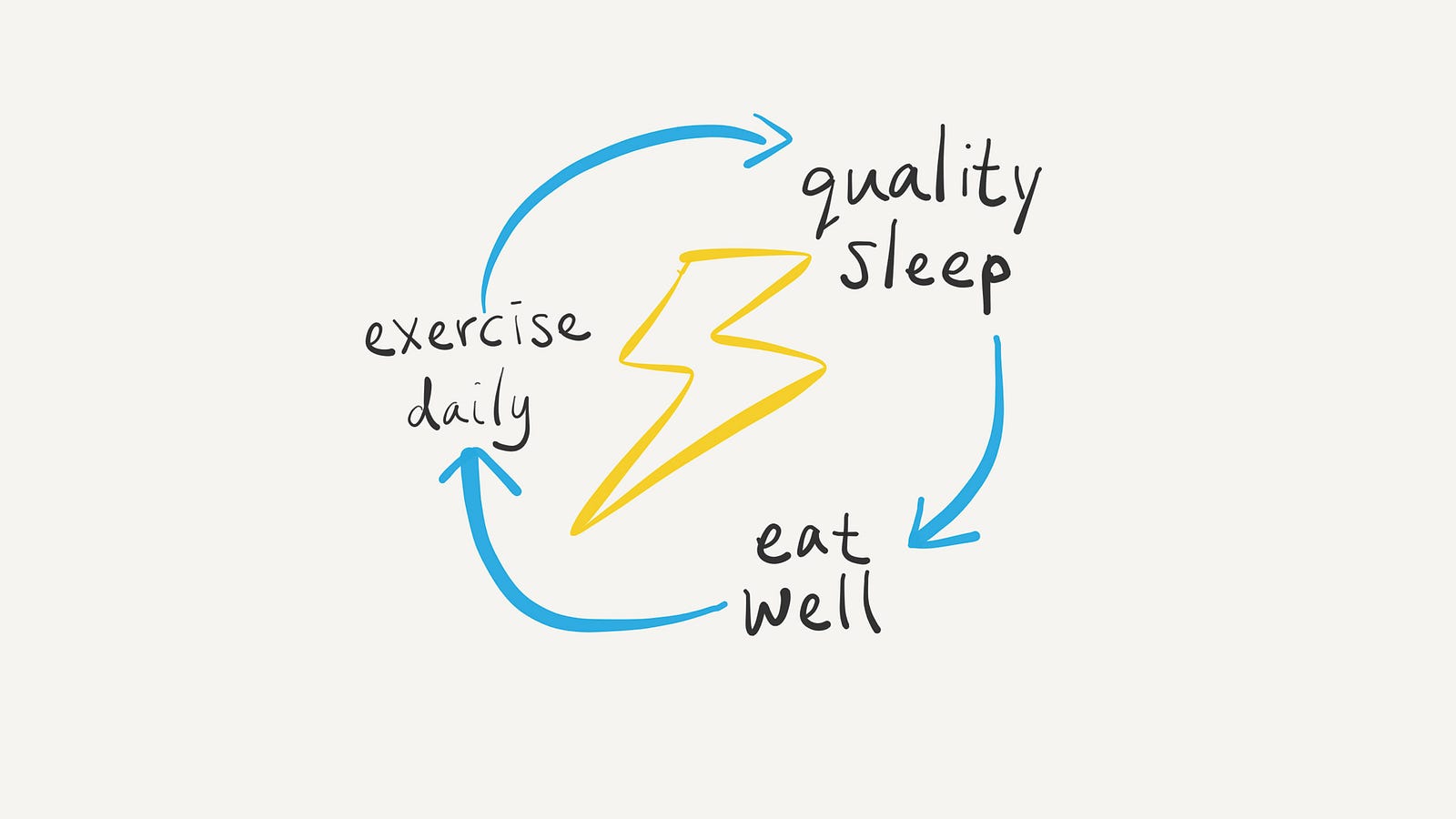
While it seems like I’m doing twice as much — I am taking on a sport that’s known to be extremely time consuming — I’m actually balancing out my work. While I’m training my body, my mind is recovering from the mental stress of work.
The source of stress for managers is the emotional burden.
The thing to understand about management is that it takes a very different kind of energy, not just mental energy, but emotional energy. When you’re coding, and your compiler is acting up, or there’s some stupid bug, you can get mad and yell at your computer, but you cannot do that with people. And people are all different, every day, every hour, you’re responding to different emotions. To be an empathetic leader, which I hope you strive to be, your mind needs to be in good shape.
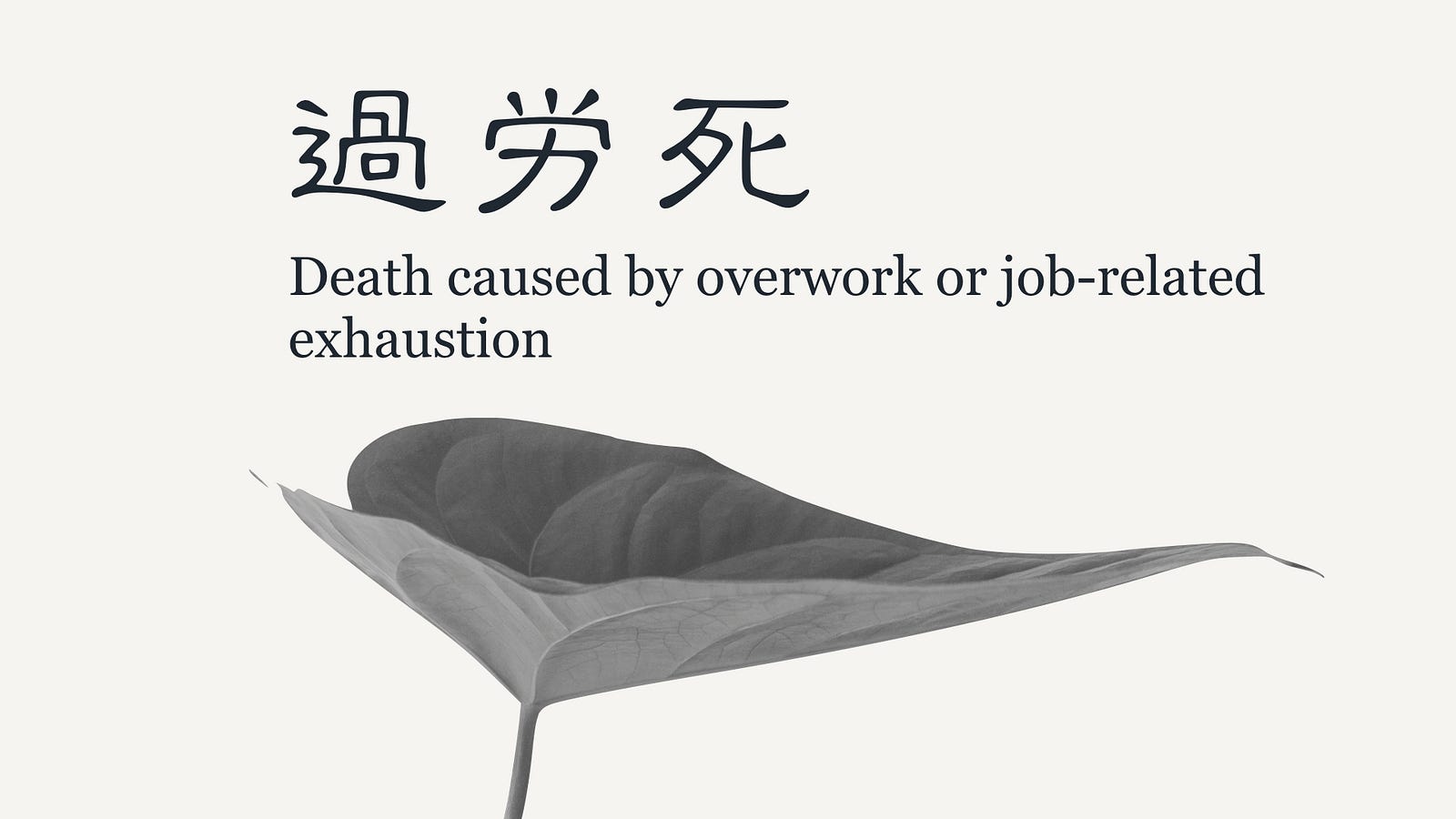
As humans, or any organic life form, we do need some stress in order to grow, but we also need space to recover from that stress. Otherwise stress can literally kill us. Japan, Korea, and China all have terms for death caused by overwork.
We tend to idolize busy-ness, rather than idleness, especially in America. But being endlessly busy isn’t the goal. Are you actually spending your limited time and energy on the right things that move you forward?
Learning to Go Slow
Triathlon training taught me about recovery. Recovery is learning how to be idle, how to relax even if you’re moving. Because any energy you expend that’s not efficiently moving you in the direction you want to go, is wasted. You need to reserve your energy for the times when you really need to push.
My cycling coach, who is a two-time Ironman champion, is always telling us to relax while we’re on the bike. A great trick to do that is to smile, it will naturally relax you. When things get tough, remember to smile and laugh.

All athletic pursuits are about form, but it matters the most in swimming because water is a thousand times denser than air. If you don’t move the smoothest way through water, all your effort is spent just trying not to drown, rather than moving forward. If you have bad form, you can’t go fast, and worse still, you will end up injuring yourself, which will take time to recover, and even longer to correct bad form and bad habits.
Embrace Discomfort
Training has also taught me how to embrace discomfort. I made a major turning point this year, because though I started running over 5 years ago, and have run well over 2000 miles, I never wanted to do it. I just forced myself to, because exercise was good for you. But I never felt good doing it, which is why it’s so easy to stop doing it when things get busy. That changed this year.
Now I really look forward to the opportunities to exercise, because it’s like taking a mini-vacation every day. This isn’t news to all of you who are already very athletic, but as someone who was a stereotypical nerd growing up, I spent a lot more time indoors with books than outside doing sports. Now, I am genuinely happy to wake up at the crack of dawn to go biking up Hawk Hill or go swimming in the freezing cold San Francisco Bay. I realized that when I let go — in my mind — of the idea that it’s supposed to be uncomfortable, I discovered that my body is much stronger and more capable than I thought, and that exercising can be really fun!
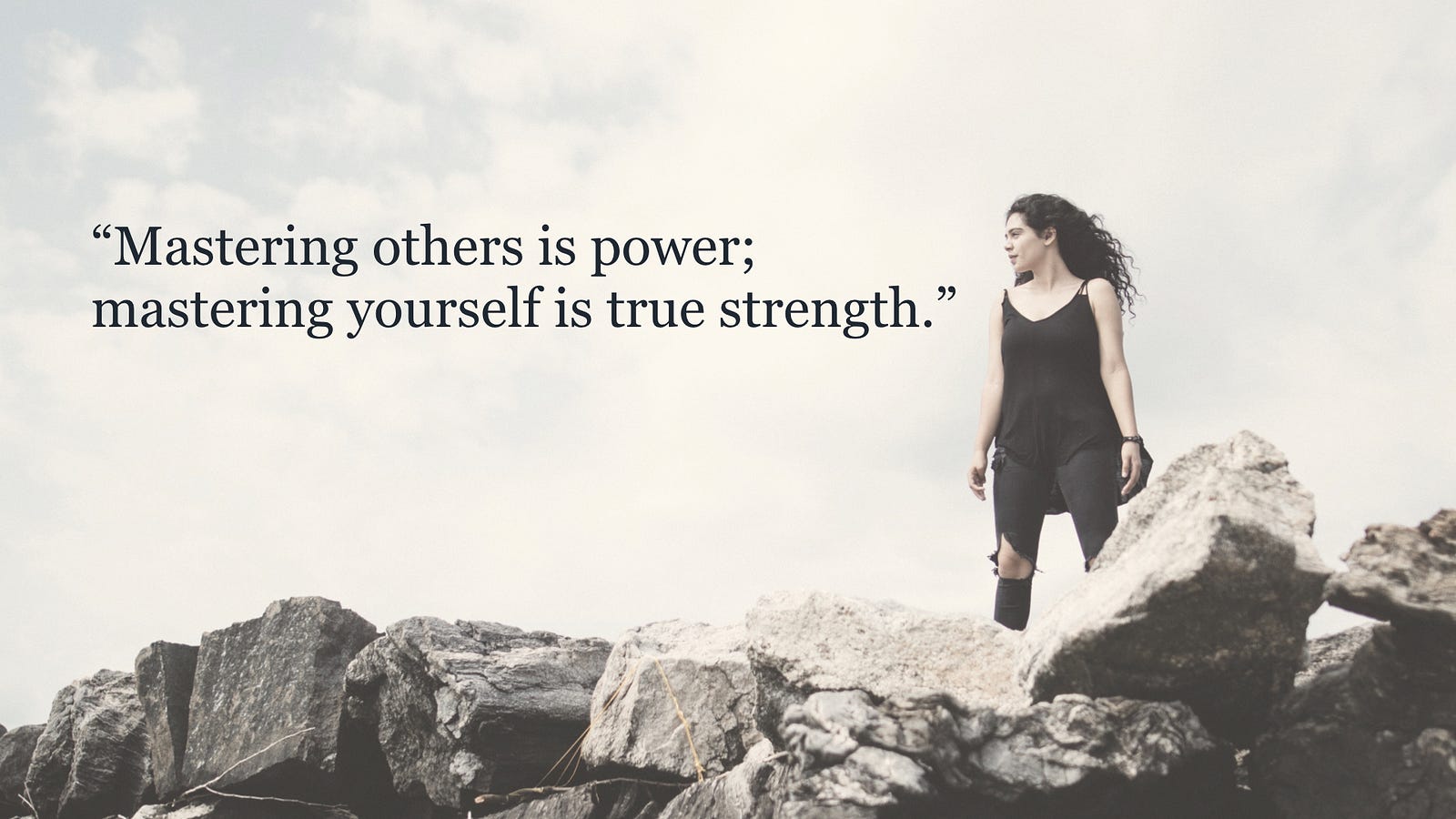
I have taken all of these lessons from training into my work, and now it’s the essence of my productivity. I went from being overwhelmed and not being able to do anything outside of work, to having prepared for this talk, written a couple of very popular blog posts, to training for my first Olympic-distance triathlon, which I completed just two weeks ago. All the while, my work responsibilities have only grown, I still travel a lot, and I have only felt more capable of handling it all.
No matter how productive you are as an individual, you can’t be a leader without people. Continue on to Part 2: Team.
